TeamGroup T-Create Classic DL 1TB SSD Review - Stalwart DRAMless
T-Create Classic is a long time series with many models, now TeamGroup is updating its T-Create Classic lineup with a DRAMless (DL) PCIe Gen4 version.
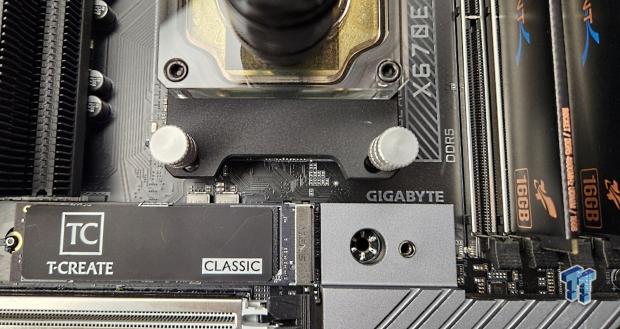
The Bottom Line
Pros
- + Gaming
Cons
- - Consumer workloads
Should you buy it?
AvoidConsiderShortlistBuyIntroduction & Drive Details
Last month we got our first taste of Phison's E21T PCIe Gen4 DRAMless controller via the TeamGroup MP44L 1TB. Phison's E21T is a 4-channel DRAMless controller typically found paired with Micron's B47R flash, and we are starting to see a wave of SSDs based on this controller/flash combo. This hardware combo offers one of the better value propositions in the 5,000 MB/s PCIe Gen4 DRAMless niche. It is arrayed with high-endurance TLC flash and typically sells for about 9 cents per gigabyte.
This hardware combo is wading into the fray, competing mainly against InnoGrit competitors, like ADATA's ATOM 50. The InnoGrit-based DRAMless value drives are highly competitive in their own right, offering a very similar value proposition to what our test subject has on offer. However, where our test subject has a definitive edge over its IG5220 competition is gaming-related storage performance, where we typically find E21 T-controlled SSDs to be about 10% better on average.
As mentioned, TeamGroup recently launched its MP44L, which on paper at least, is identical to the T-Create Classic DL 4.0 we are about to put through its paces. Same hardware configuration, same factory sequential and random specs, same TBW and warranty. Even the same type of graphene-coated aluminum foil label. We are struggling to understand why, other than a modernization of its T-Create lineup, TeamGroup is apparently doing the same drive twice. Different markets, maybe? We aren't sure, really.
Well, whatever their reasoning might be, we know one thing for certain, factory specs might be identical with the MP44L, but overall performance is definitely not. We find the MP44L to offer significantly better performance, so the T-Create Classic DL 4.0 will need to come in with a very compelling price point to be an attractive option for the informed. As we see it, we would need to get this drive for 6 to 7 cents per gigabyte for us to even consider a purchase. Unfortunately, we don't know what the drive will retail for at this time.
Drive Details
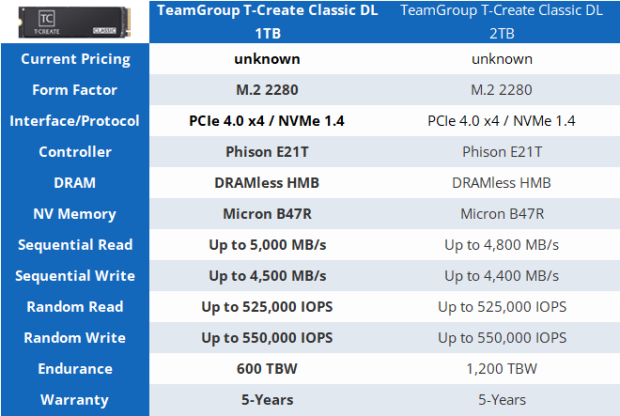
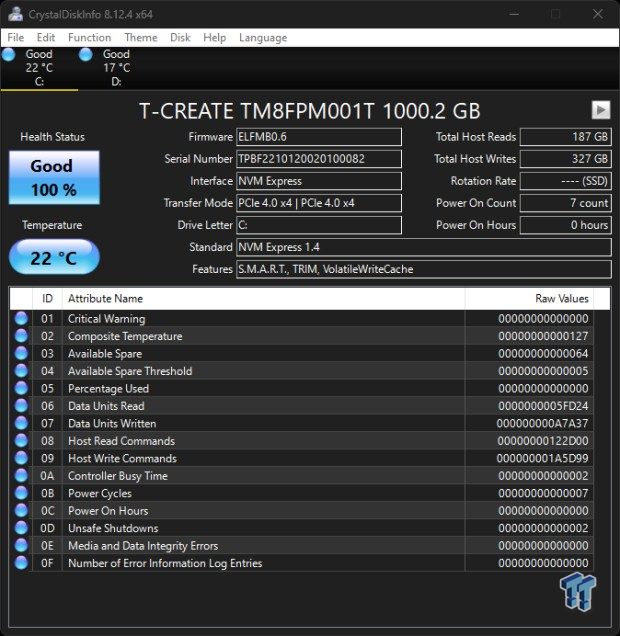
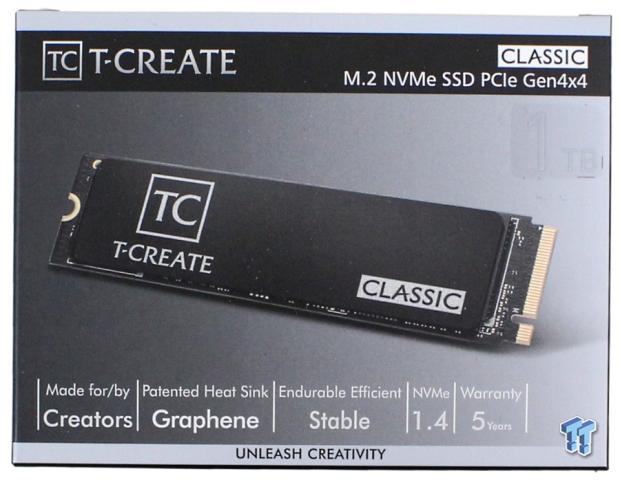
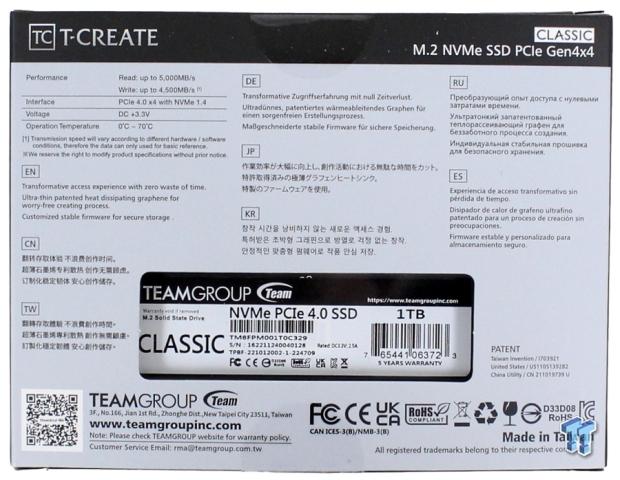


Our test subject features TeamGroup's exclusive and highly effective, thermally conductive graphene coating on aluminum foil for the SSD label. The label on its own is very effective at dissipating heat, and because the label is less than 1mm thick, it can be used in conjunction with any type of heatsink for even more efficient cooling.
Jon's Test System Specifications
Intel Test System
- Motherboard: ASUS ROG Z690 HERO
- CPU: Intel Core i9-13900K - Buy from Amazon
- Cooler: Alphacool Eissturm Hurricane Copper 45 - Buy from Amazon
- RAM: Sabrent Rocket DDR5 32GB - Buy from Amazon
- Graphics Card: MSI SUPRIM X RTX 3080 12GB - Buy from Amazon
- Case: PrimoChill's Praxis Wetbench - Buy from Amazon
- Power Supply: be quiet! Dark Power Pro 12 1200W - Buy from Amazon
- OS: Microsoft Windows 11 Pro 64-bit - Buy from Amazon
AMD Test System
- Motherboard: GIGABYTE X670E AORUS Master
- CPU: AMD Ryzen 5 7600X - Buy from Amazon
- Cooler: Alphacool Eissturm Hurricane Copper 45 - Buy from Amazon
- RAM: Sabrent Rocket DDR5 32GB - Buy from Amazon
- Graphics Card: MSI SUPRIM X RTX 3080 12GB - Buy from Amazon
- Case: PrimoChill's Praxis Wetbench - Buy from Amazon
- Power Supply: be quiet! Dark Power Pro 12 1200W - Buy from Amazon
- OS: Microsoft Windows 11 Pro 64-bit - Buy from Amazon
Because we at TweakTown like to be first at everything whenever we can, we will present our storage performance results for the test subject on both 13th Gen Intel and 7000 Series AMD platforms going forward for the foreseeable future. Because Intel still delivers the best real-world storage performance, (Look Here), our running chart will continue to be Intel-based until AMD can deliver better real-world storage performance than its rival.

Synthetic Benchmarks: CDM, Anvil, ATTO
CrystalDiskMark
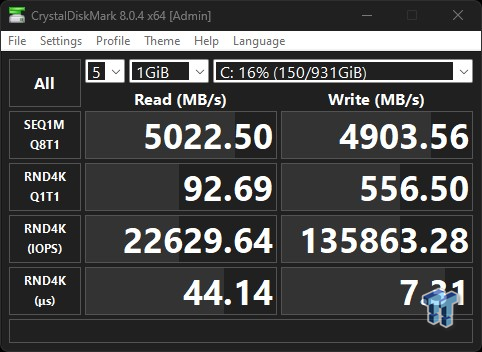

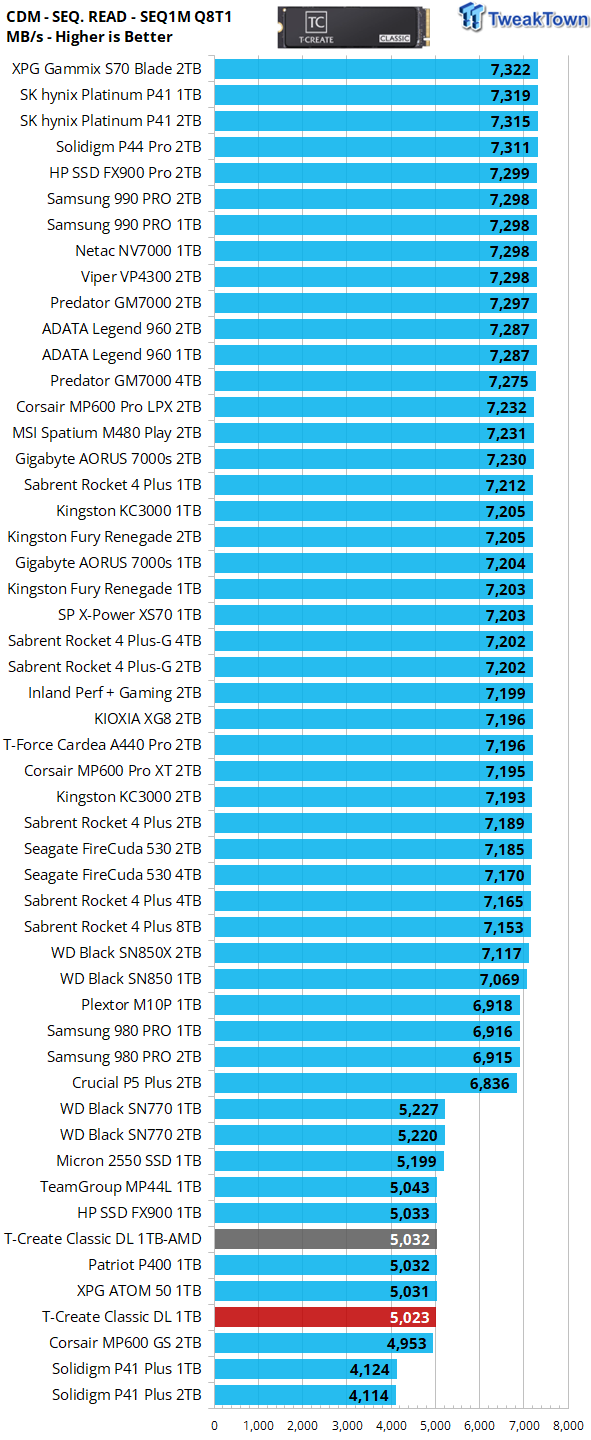
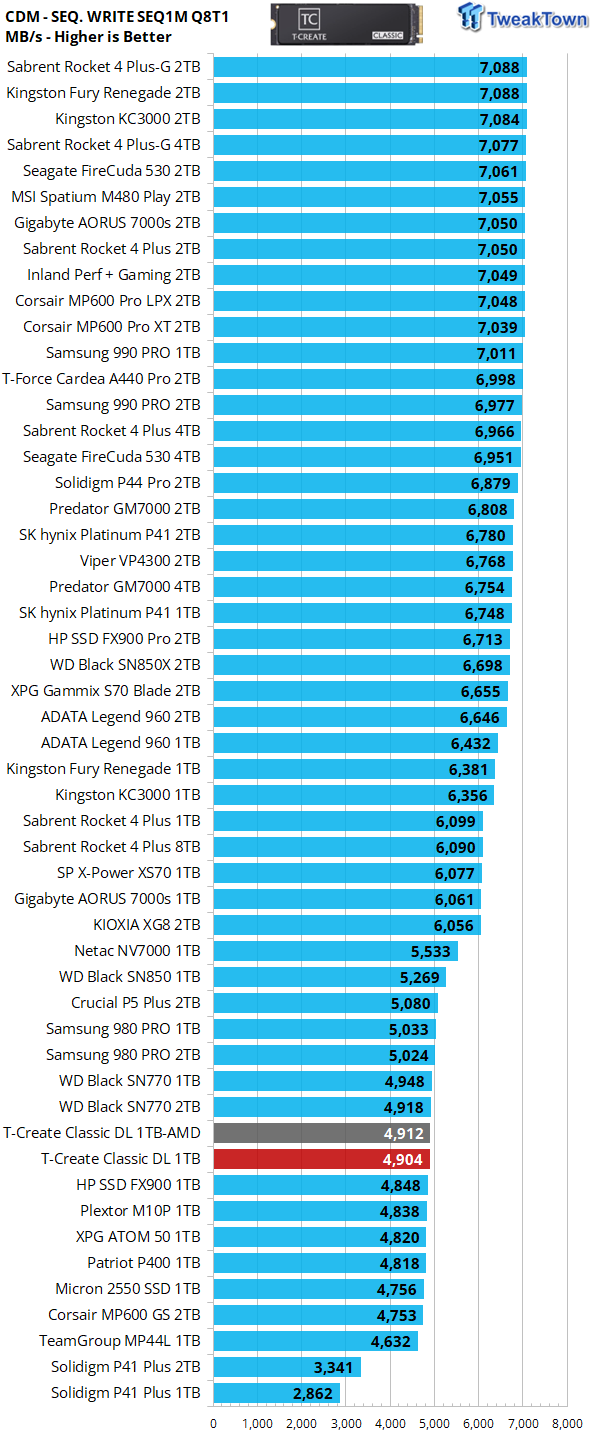
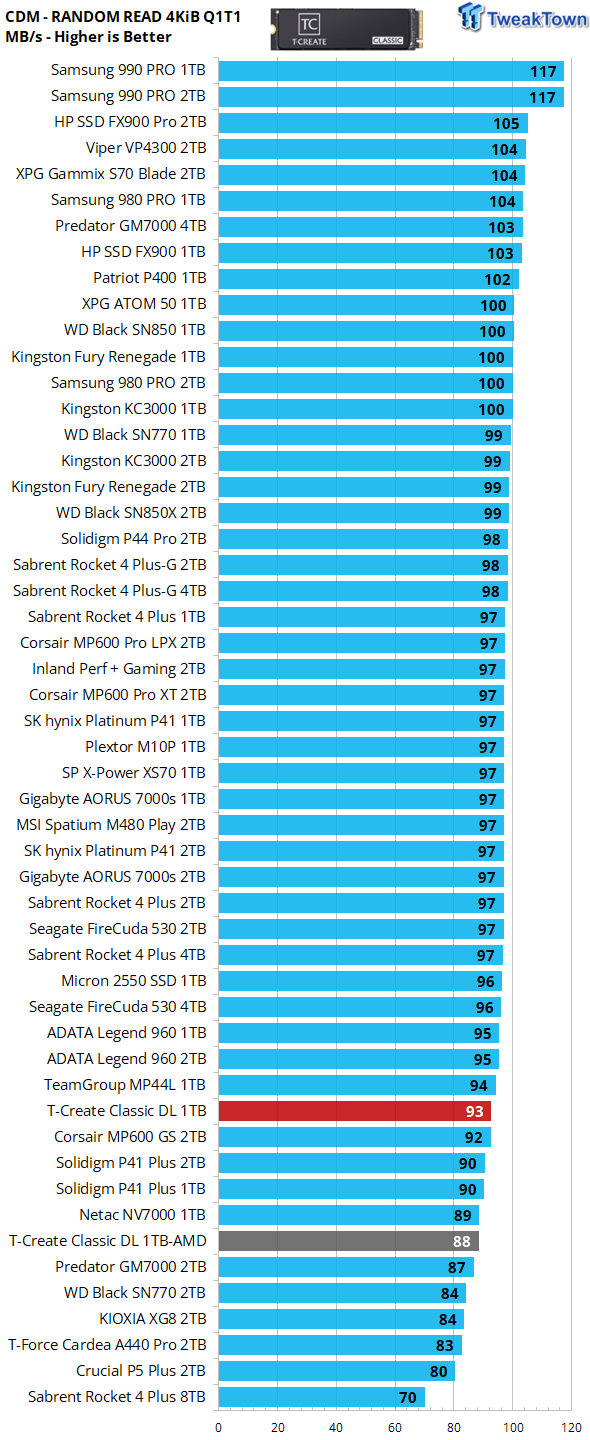
Sequential throughput looks good, with read hitting spot on at 5,000 MB/s and write exceeding factory up to specs by 400 MB/s. So far, so good. Now focusing on a much more important performance metric, Q1T1 random read, we find our test subject lagging behind the MP44L by roughly 1%.
Anvil's Storage Utilities
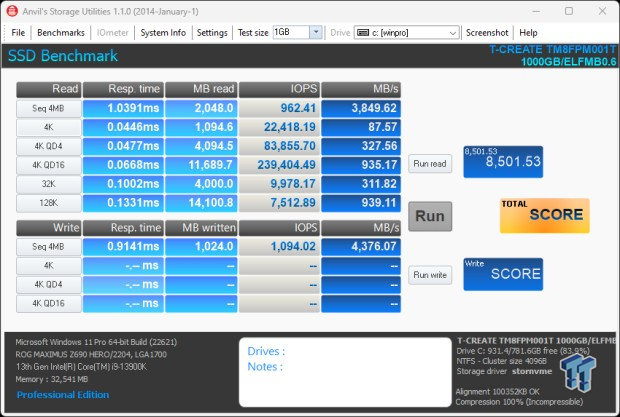
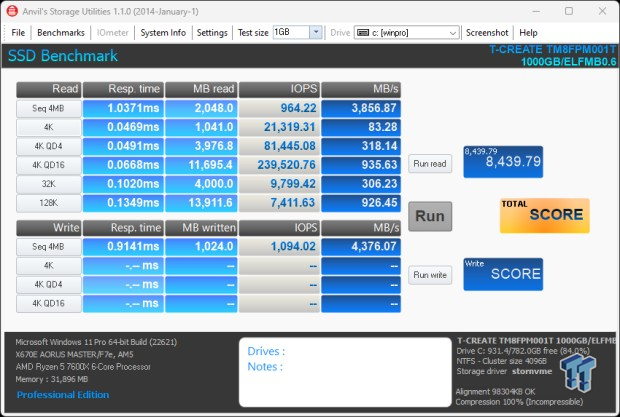
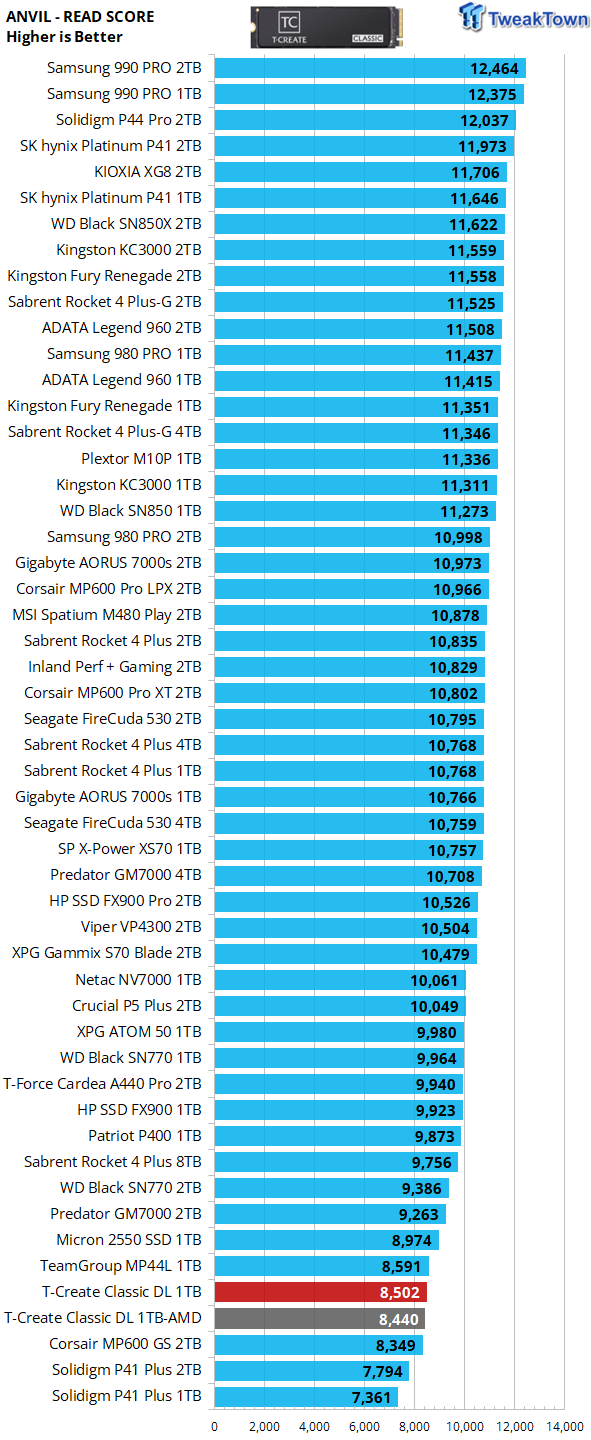
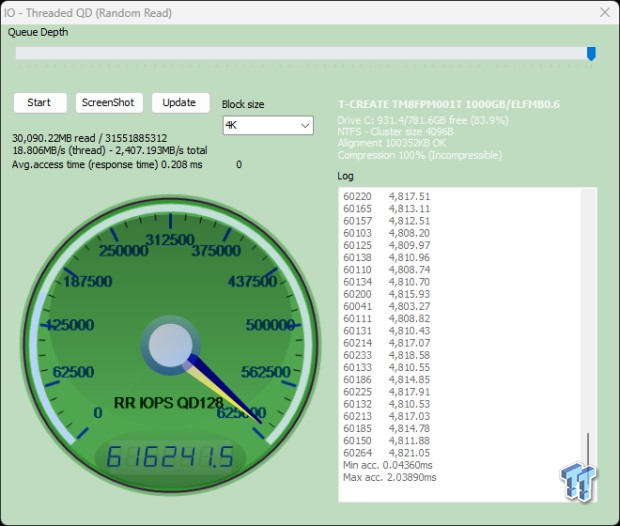
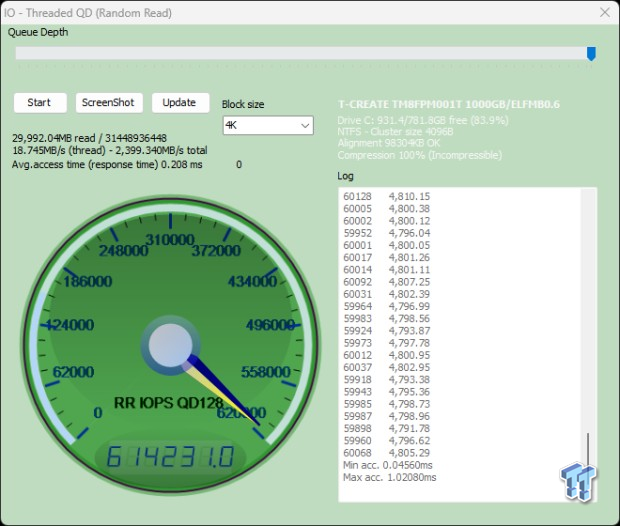
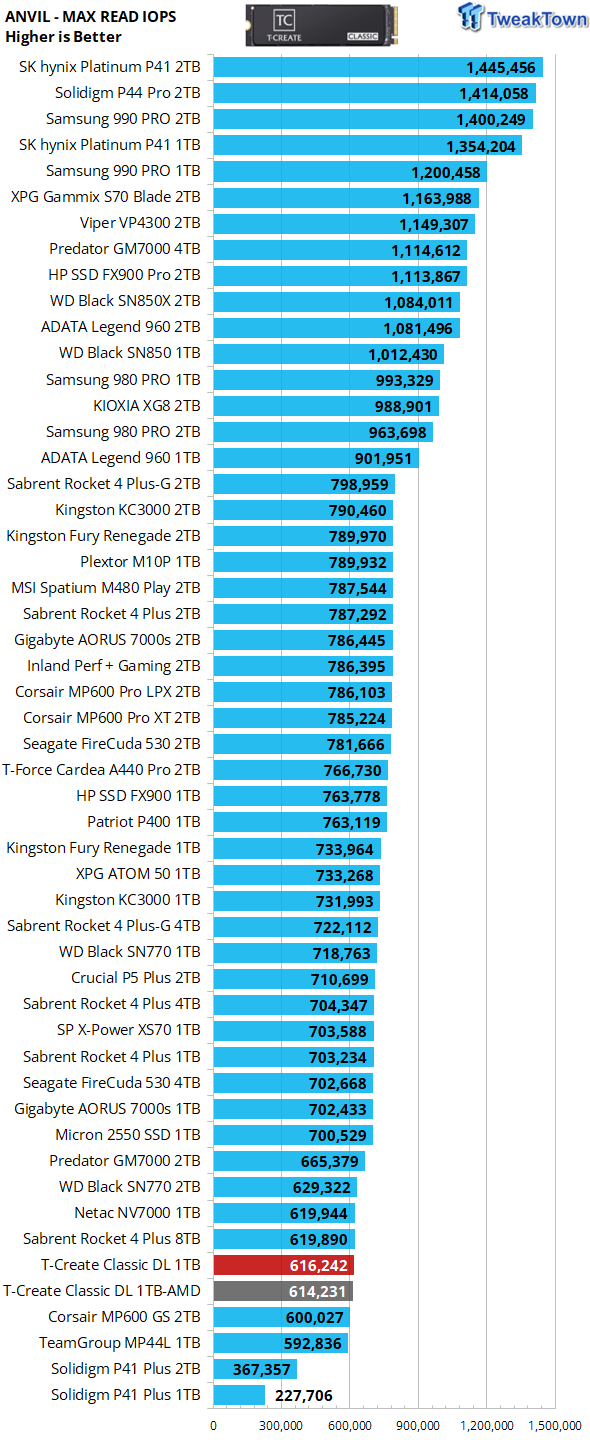
Scoring comes in as expected for this hardware configuration. Moving over to all-out random read performance, we find TeamGroup's DRAMless offering able to exceed stated up-to-max IOPS factory specs and even the better-performing MP44L.
ATTO
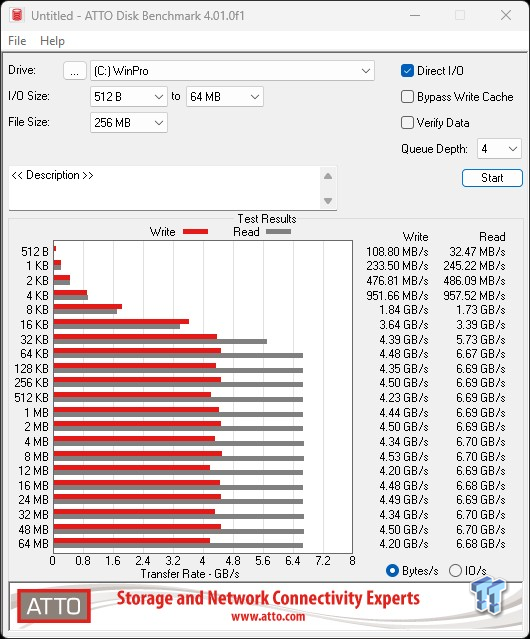
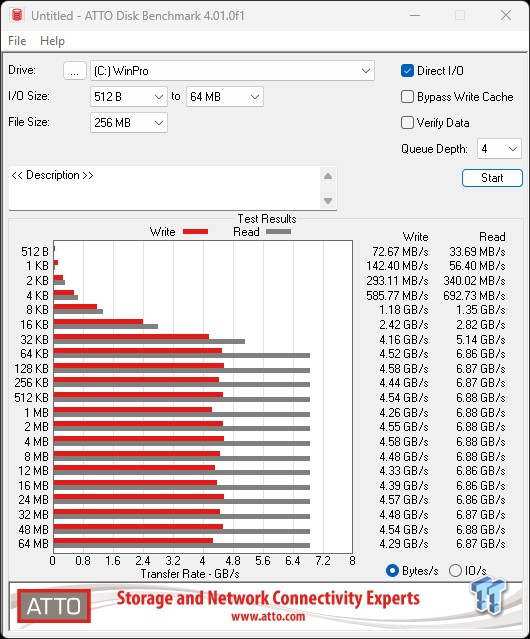
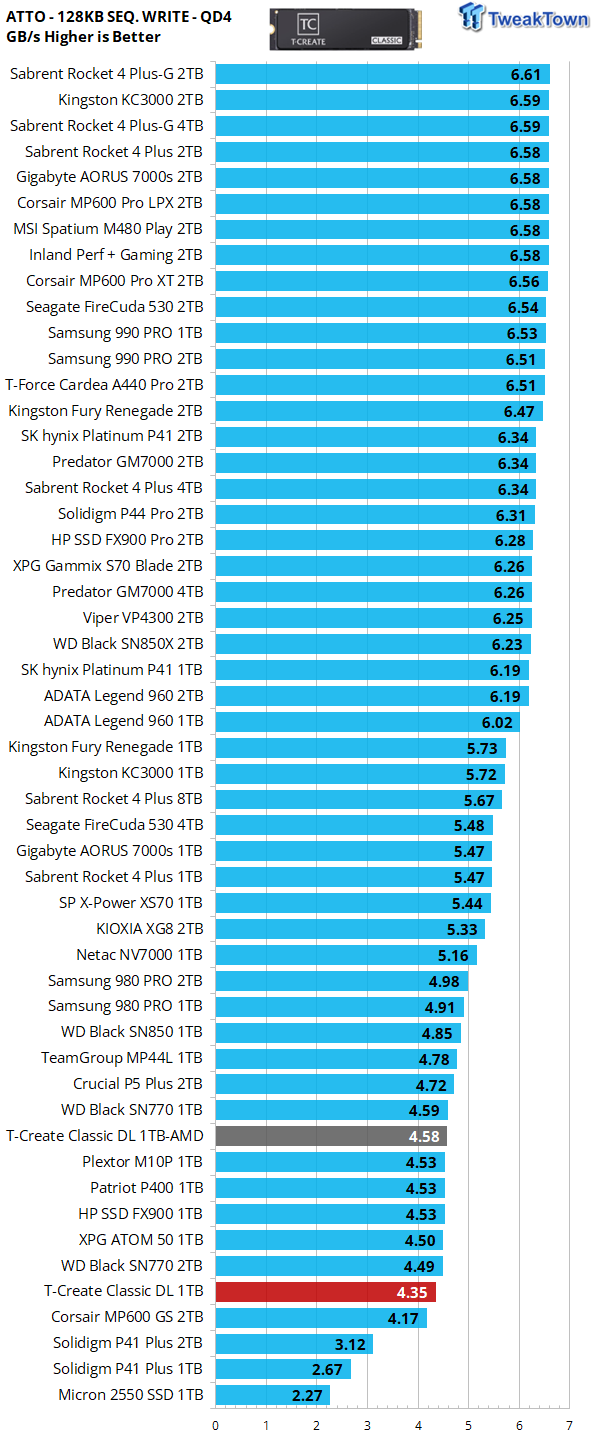
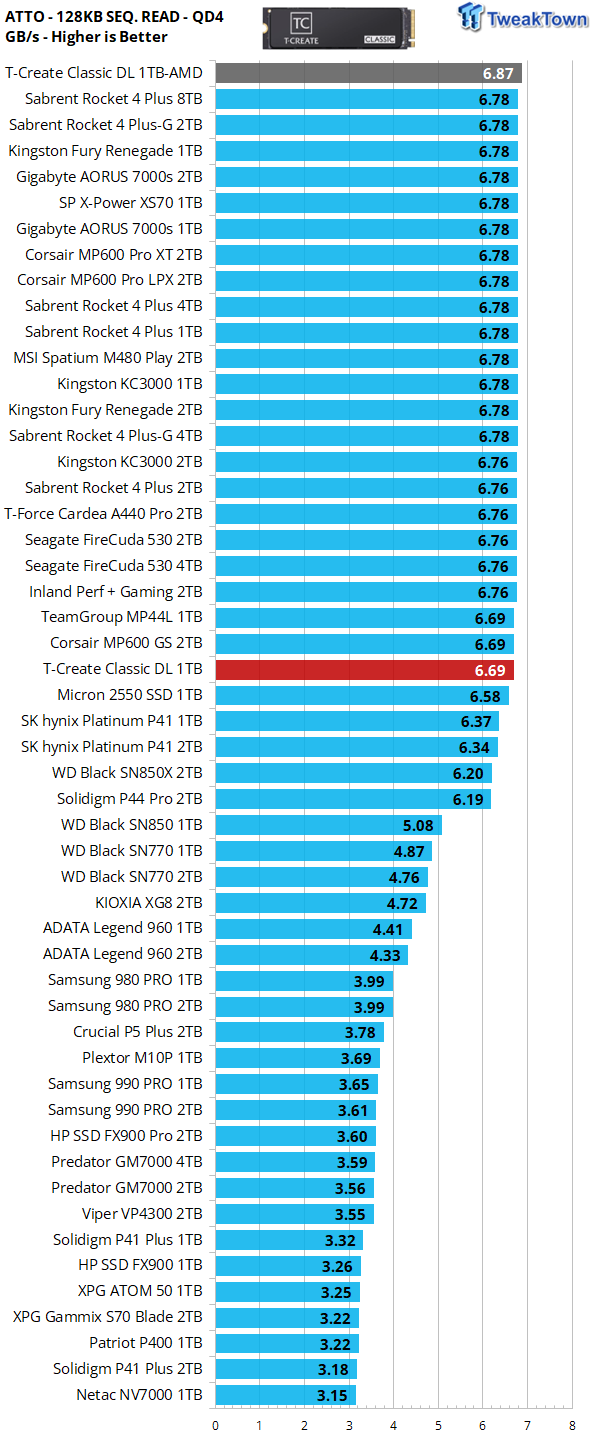
More than anything else, ATTO gives us a clear picture of what transfer sizes a particular SSD favors in terms of sequential throughput. As it is with all Phison-controlled SSDs, the MP44L is running full speed at 128K transfers. Additionally, because of Phison's core architecture, being the way it is when dealing with compressible data, the T-Create Classic delivers that same kind of a faux sequential read throughput this hardware configuration is known for.
Real-World Testing: Transfers, 3DMark SSD Gaming Test, PCM10 Storage
Transfer Rates
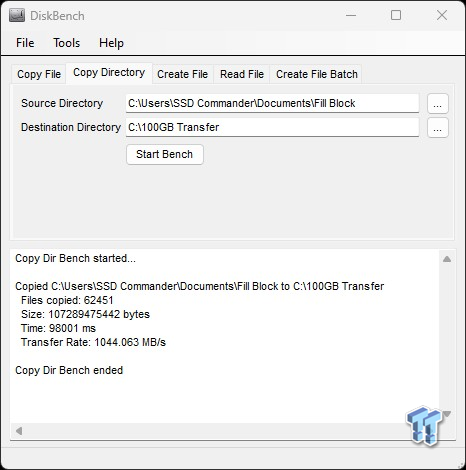
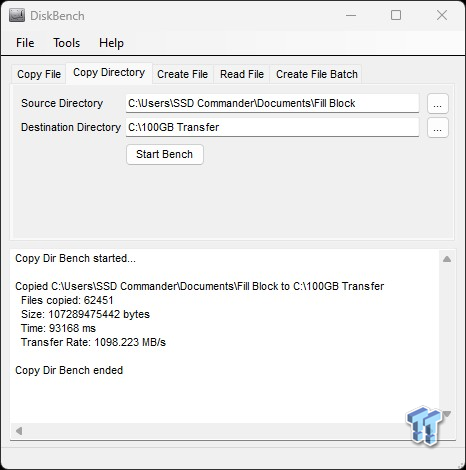
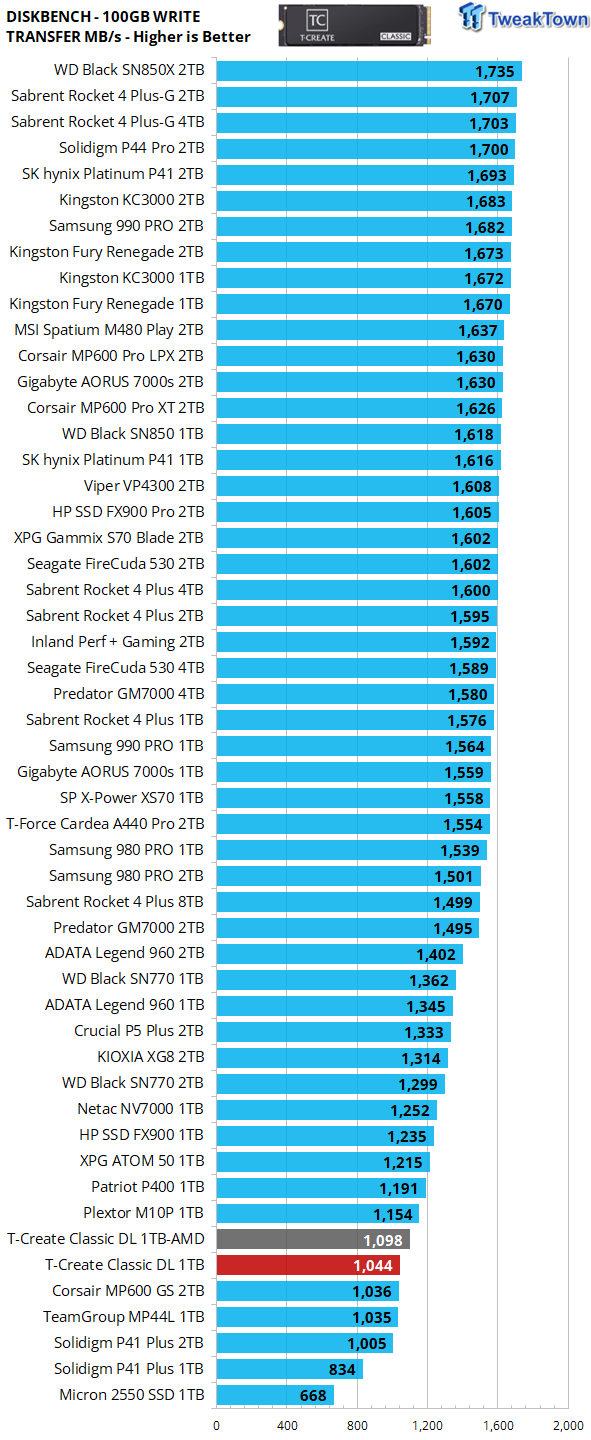
Our 100GB data transfer test is not your ordinary 100GB of data. Ours is a crushing mix composed of more than 62K files. Write performance random or sequential, as it relates to large transfers, is an infrequent operation, and as such, we do not consider it to be an important performance metric in the consumer space. An example being how many times is a game installed vs. how many times it's played. 1,000 -1,100 MB/s is as expected, and plenty good enough for our liking.
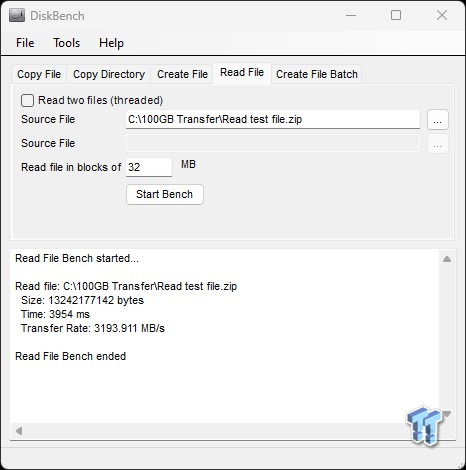
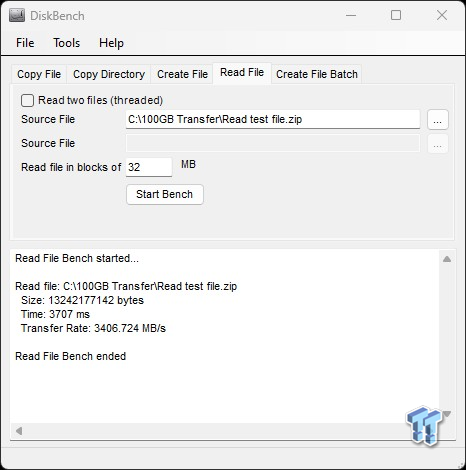
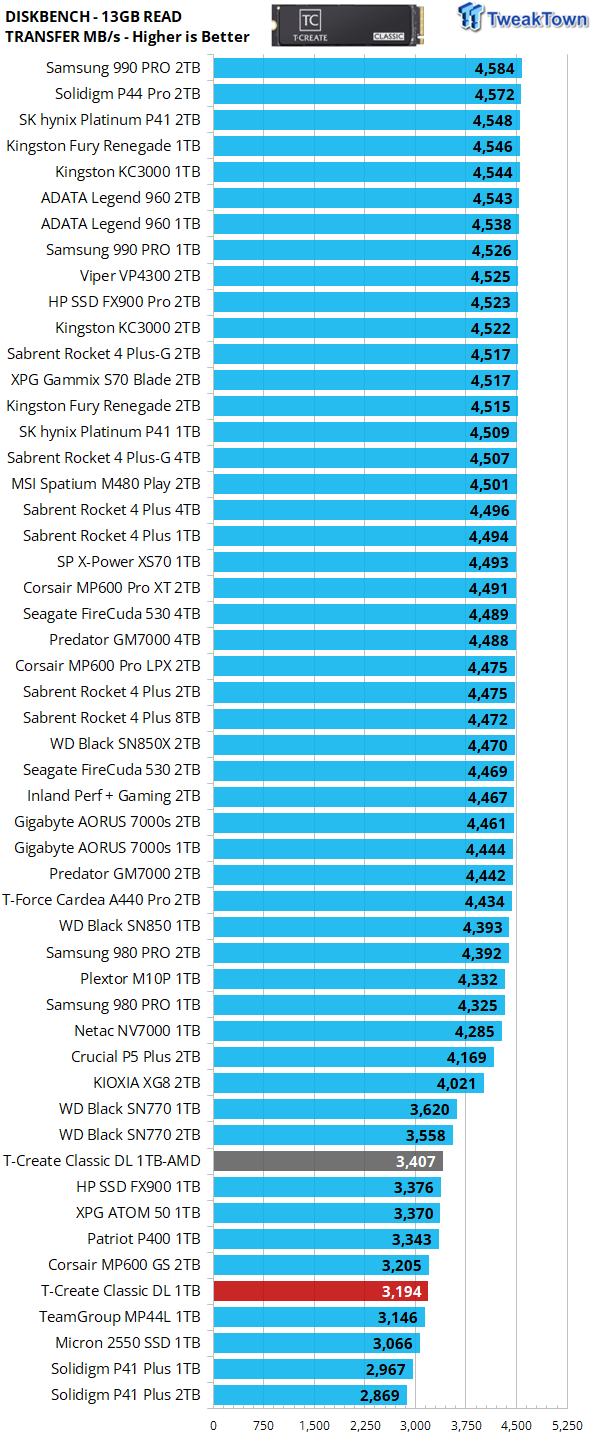
Slightly better than expected. Nice.
3DMark SSD Gaming Test
UL's newest 3DMark SSD Gaming Test is the most comprehensive SSD gaming test ever devised. We consider it superior to testing against games themselves because, as a trace, it is much more consistent than variations that will occur between runs on the actual game itself. This test is in fact the same as running the actual game, just without the inconsistencies inherent to application testing.
In short, we believe that this is the world's best way to test an SSDs gaming prowess and accurately compare it against competing SSDs. The 3DMark SSD Gaming Test measures and scores the following:
- Loading Battlefield V from launch to the main menu.
- Loading Call of Duty Black Ops 4 from launch to the main menu.
- Loading Overwatch from launch to the main menu.
- Recording a 1080p gameplay video at 60 FPS with OBS (Open Broadcaster Software) while playing Overwatch.
- Installing The Outer Worlds from the Epic Games Launcher.
- Saving game progress in The Outer Worlds.
- Copying the Steam folder for Counter-Strike Global Offensive from an external SSD to the system drive.
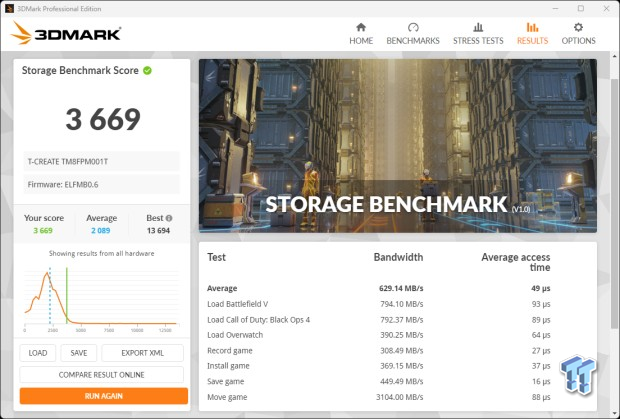
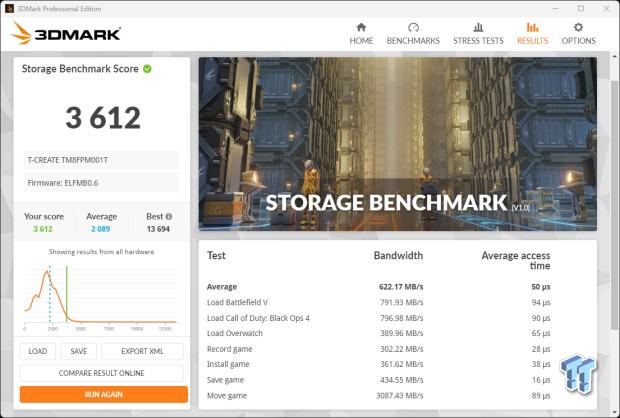
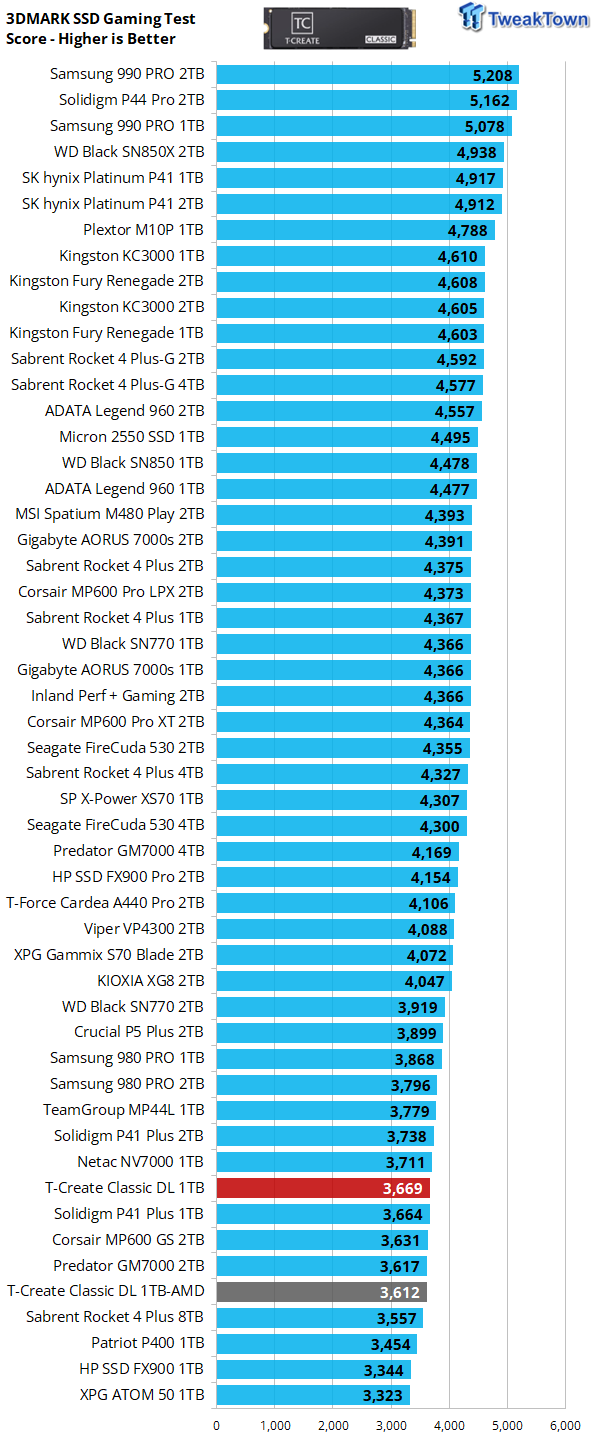
Gaming is a performance metric that matters to the majority of DIY consumers, especially to the enthusiast crowd that TweakTown caters to. Very nice here because, as it relates to SSD gaming duties, our test subject is 10% better than the IG5220 drives and within striking distance of Samsung's 980 Pro. Outstanding.
PCM10 Storage Tests
PCMark 10 Storage Test is the most advanced and most accurate real-world consumer storage test ever made. There are four different tests you can choose from; we run two of them.
The Full System Drive Benchmark and the Quick System Drive Benchmark. The Full System Drive Benchmark writes 204 GB of data over the duration of the test. The Quick System Drive Benchmark writes 23 GB of data over the duration of the test. These tests directly correlate with mainstream user experience.
PCMark 10 Full System Drive Benchmark
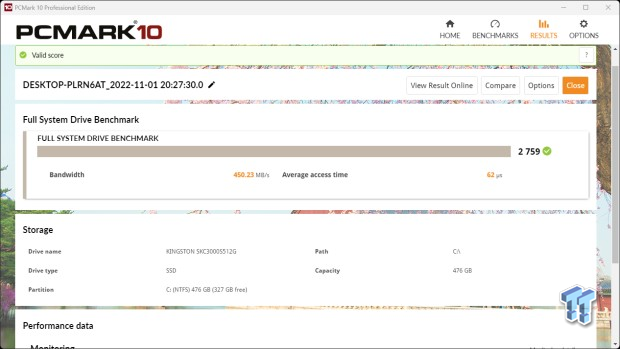
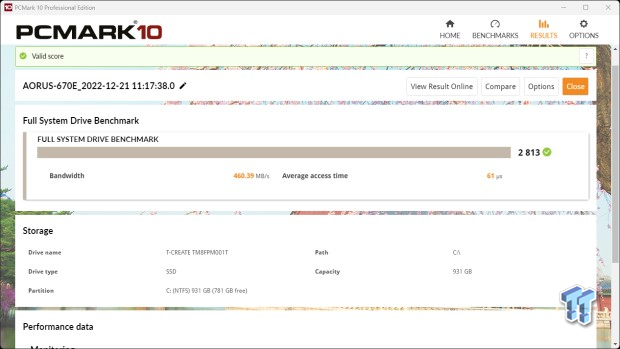
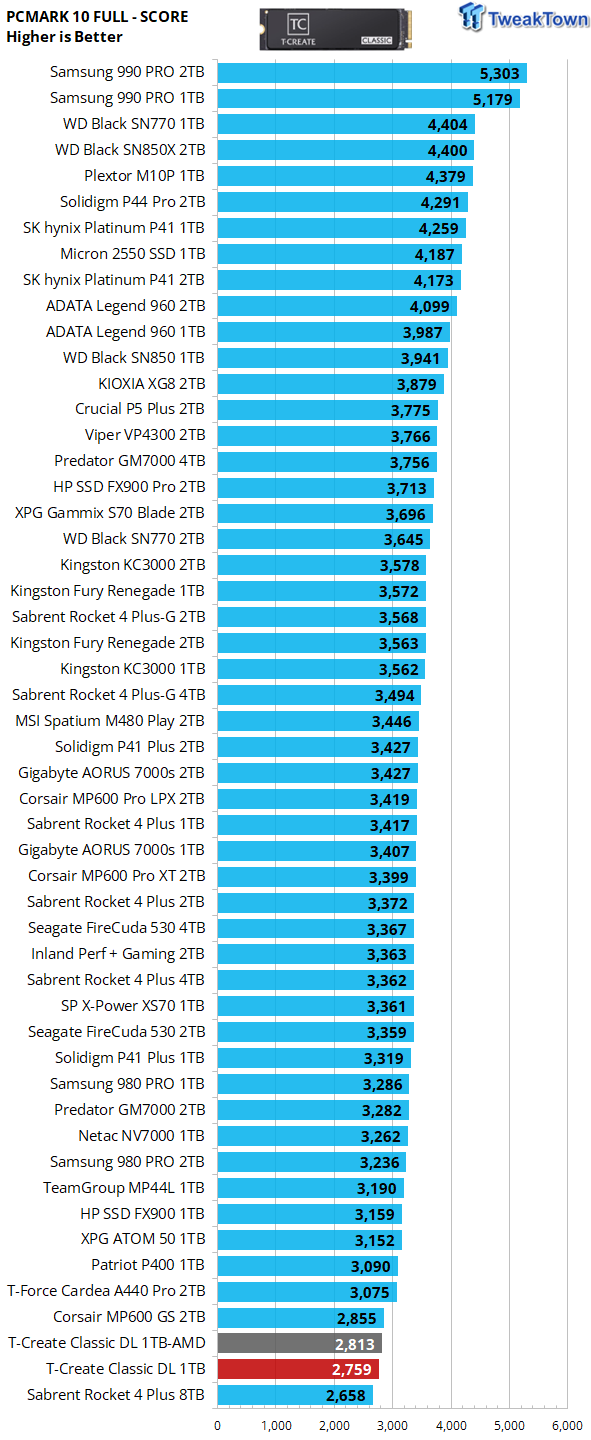
This particular test writes 204GB data and covers a broad range of common consumer tasks, including booting Windows 10, file transfers, Adobe and Office applications, and startup times for games, including Battlefield V, COD Black Ops 4, and Overwatch. Unlike synthetic numbers, this is comprehensive real-world data which is why we use it to rank SSDs in terms of user experience.
Heavy consumer workloads involving a mass amount of data have traditionally crippled DRAMless SSDs, which is exactly what happens to our test subject. Here is where we begin to see the differences between our test subject and its cousin, the MP44L.
PCMark 10 Quick System Drive Benchmark
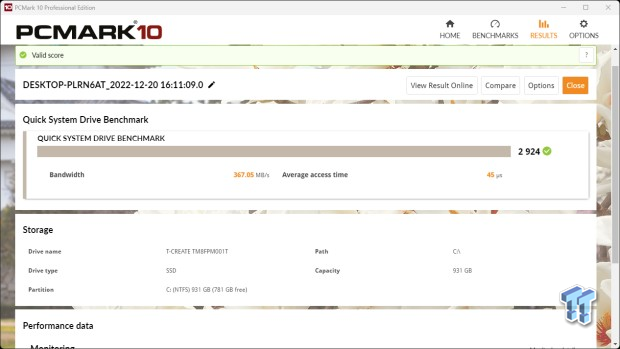
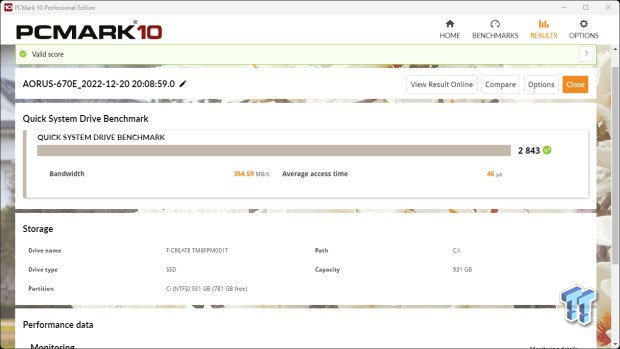
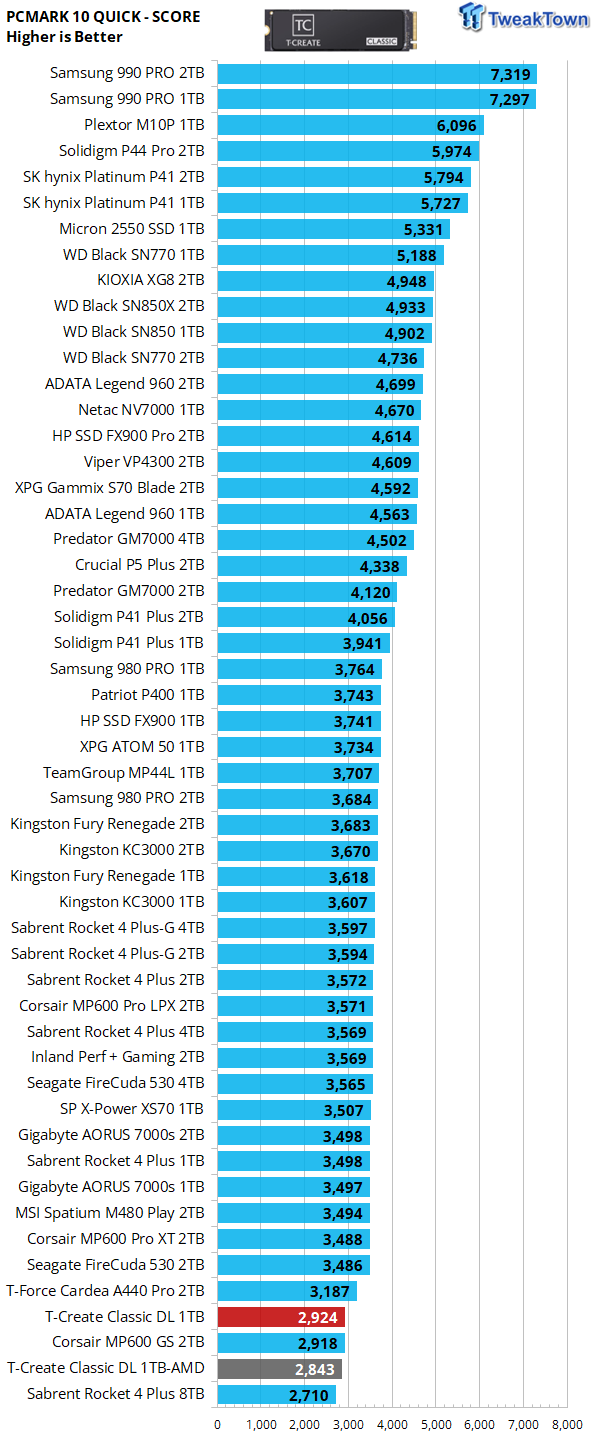
Massive performance disparity here between the MP44L and our test subject. We can only attribute the performance disparity here to what must be a difference in the flash. B47R comes in various grades that offer varying degrees of real-world performance; as we see it, this is the likely culprit.
Final Thoughts
As mentioned back at the beginning of this review, we are struggling to find a fit for the T-Create Classic DL 4.0. As it relates to performance alone, there are better choices to be had, even coming from TeamGroup's own stable. TeamGroup is playing up the reliable performance angle that its T-Create Classic line of SSDs has become known for, but we don't see it happening there either. The only way we see this SSD as one to consider is if it can be had for something like $60 per terabyte.
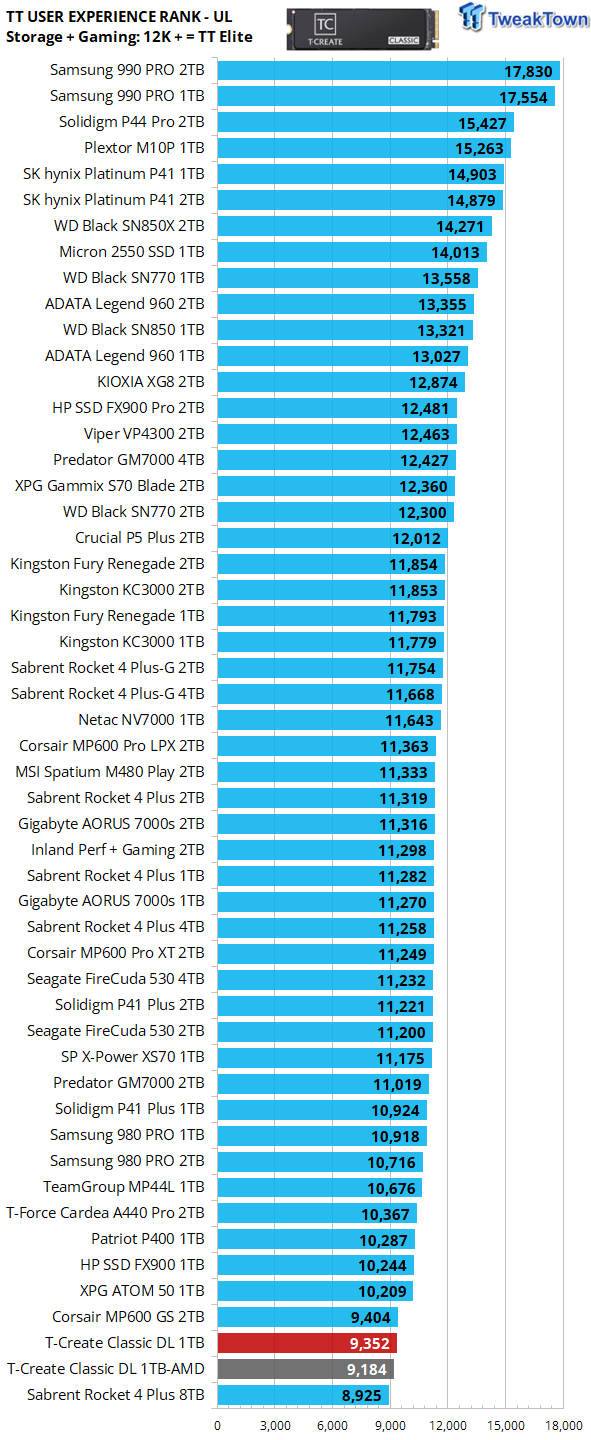
We rank SSDs in terms of overall user experience (performance where it matters most) as expressed by PCMark 10 storage and 3DMark gaming storage tests. We consider a user experience score of 12K or more to verify an SSD as a TweakTown Elite performer. Its gaming prowess is not enough to make a real difference here, as we rank SSDs, but it is still worth mentioning as it is still a considerable factor for most consumers. Again, it does game well.
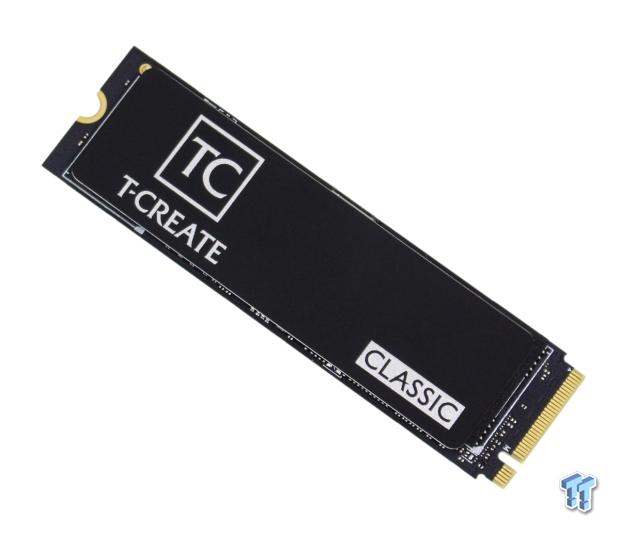
Without knowing what this drive is going to sell for, it's very hard to make a final call on this one. We will say consider if the price is right.

Performance | 70% |
Quality | 85% |
Features | 80% |
Value | N/A |
Overall | 78% |
The Bottom Line
Better options can be had, but it might be a consideration at $60 per TB.



